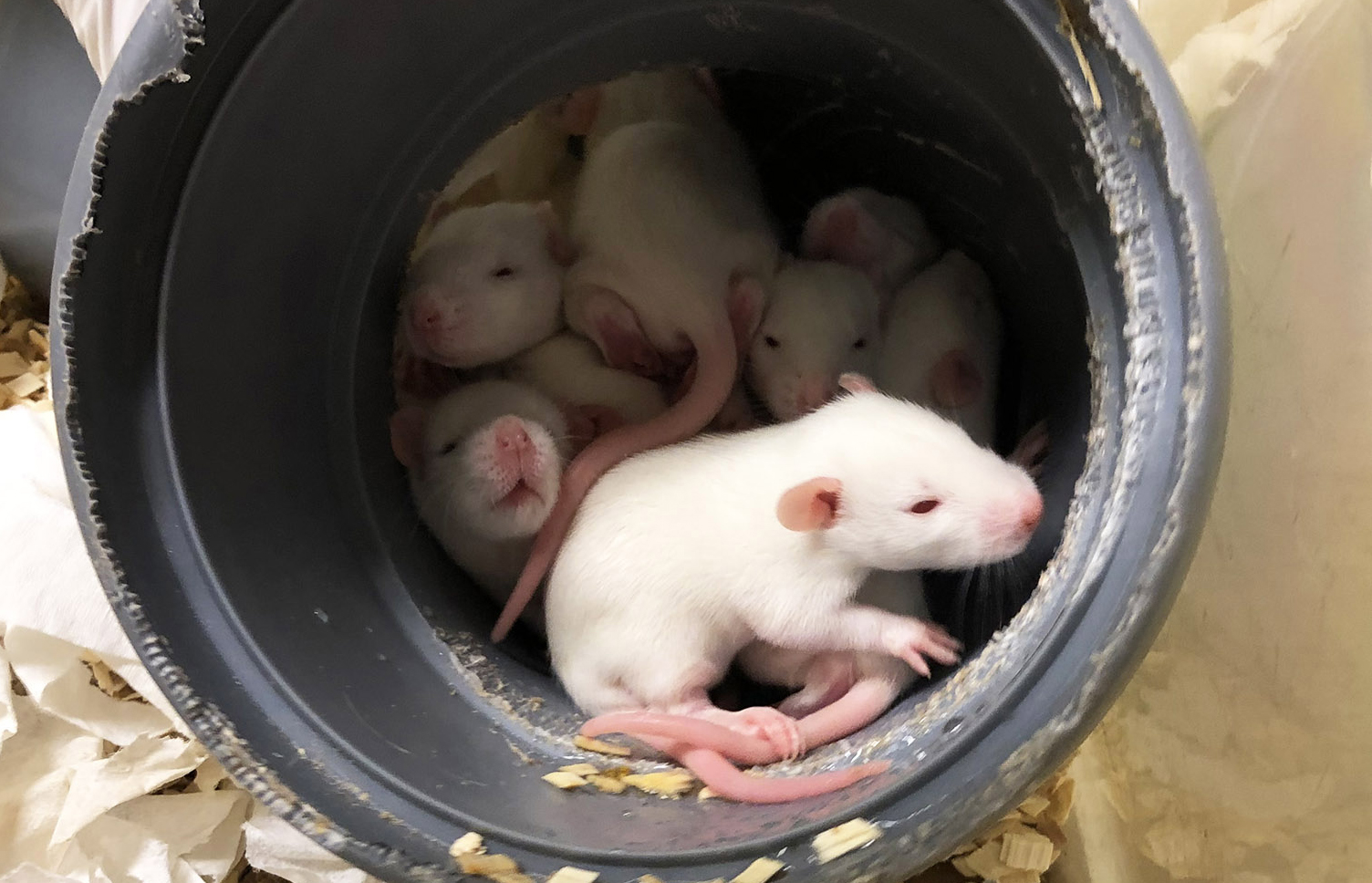- Startsida
- Languages
- English
- Swedish Board of Agriculture
- Animals
- The Swedish 3Rs Center
- News
- Health, breeding and experiment descriptions
Publiceringsdatum1 June 2022
Health, breeding and experiment descriptions
Umeå University uses several animal species in research and teaching. The Swedish 3Rs Center has talked to staff from the university's animal welfare body, to let them share their work on the 3Rs.

Rat pups at Umeå University.
Umeå University's animal facility is a relatively small organization, says Anders Thornell, who is a veterinarian at the university. They have short and direct ways of communication based on mutual respect and understanding of each other's professions. The basic principle is that good research requires healthy animals.
The university has two faculties that work with animal models, the Faculty of Medicine and the Faculty of Science and Technology, which have a joint animal welfare body. The university also has a marine research centre, which has its own animal welfare body.
Rodents, zebrafish and pigs
The biomedical activities are organized within the Centre for Comparative Biology. Today they have about 7 500 rodents, the majority of which are mice. There is also a zebrafish facility. Twelve animal technicians in total work at the facilities, which has connections with around 60 research groups.
The animals are used in all types of studies, from infectious diseases and cancer to developmental biology and metabolic syndromes that can lead to diabetes and obesity.
— But there is also ongoing research in neurodegenerative diseases, ageing, the sense of smell and the eye, says Cathrine, who works at the university. We also have pigs that are used in clinical research and teaching.
Planned breeding – fewer animals
The animal welfare body is working to change the view on breeding and surplus animals. For example, they offer researchers to freeze sperm from mouse strains in order to breed them if necessary. In this way, the number of surplus animals can be reduced.
— Animals are not something you take off the shelf when you need them. We should not accept surplus animals that are only there for safety's sake, says Anders. It is relatively easy to get new mice if needed. In addition, it is good to slow down the genetic drift by limiting the number of generational changes.
Gauze pad has replaced sentinel mice
Elisabeth describes how they work with health inventory and hygiene. A good example of the 3Rs is how they have phased out all sentinel animals, i.e. the animals that are used to track contagion. The method with sentinel animals is to expose the animals to old bedding material with urine and faeces from cages that are tested for infection, i.e. the sentinel mice are exposed to a bad environment.
In Umeå, the health inventories are done by attaching a gauze pad over the outlet air pipe in the rack for cages, and any pathogens that travel on dust particles can be captured. Pieces of the gauze are then sent for analysis, which is a safer and cheaper method than using sentinel mice.
Clear descriptions of each experiment
To facilitate the care of animals during ongoing experiments, one has to write an instruction. It is a detailed description of each experiment, which must be updated continuously and be in direct proximity to the animal concerned. In this way, anyone handling the animal can see exactly what is going to happen in the near future, who is responsible for the experiment and what to do.
In many cancer and infection studies, the experiment itself can lead to the animal getting ill. Then it is crucial that all persons involved and handling the animals are familiar with what is going to happen, which endpoint to apply, whom to contact if the animal is not well and who is responsible for what. Animal technician Sara:
— My primary task as an animal technician is to ensure that the animal is well, so deviations due to an experiment must be completely clear to me.
Practice handling animals
In the practical part of the university's laboratory animal course, everyone gets to practice handling like learning to lift and to move and hold the animals in a good way.
— We emphasize to all new students and course participants how important the handling is and how it affects the animals and thus the studies in which the animals are part of, says Elisabeth. It is an ongoing discussion between colleagues - how can we improve and refine our handling.
Senast uppdaterad: